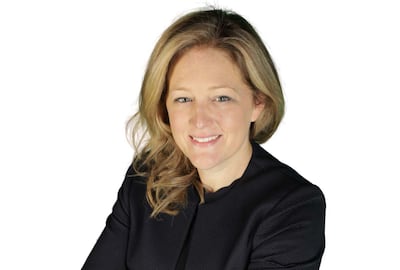Listed companies in the UAE have more than doubled the number of women on their board of directors since 2020, as part of the country's efforts to improve gender diversity among corporations.
Women held 77 seats in the boardrooms of listed companies in 2022, up from 29 seats in 2020, according to a study by Aurora50, a social enterprise working towards gender equality in GCC boardrooms, and the Mohammed bin Rashid School of Government.
Women made up 8.9 per cent of the 868 board seats of the 115 listed companies on the Abu Dhabi Securities Exchange and the Dubai Financial Market as of June 2022, up from 3.5 per cent in 2020, the report showed.
“It is excellent to see such progress being made in boardrooms across the UAE, but we know there is a lot more that can be done to accelerate the pace of change,” said Diana Wilde, co-founder of Aurora50.
“It is vital now that boards embracing greater diversity must also ensure they do so through inclusive leadership to reap the rewards of higher performance and profitability.”
The increase in female board members comes after the country's market regulator, the Securities and Commodities Authority, gave listed companies a mandate last year to ensure they have at least one female director on their boards.

Regionally, 12 women in Saudi Arabia held 1.7 per cent of board seats in 2021, compared with 0.7 per cent in 2018, based on data from 79 companies, according to global consultancy Deloitte.
Globally, female representation on corporate boards has grown in recent years, with women holding 19.7 per cent of seats at the table around the world — a rise of 2.8 per cent since 2019, the report by Deloitte and the 30% Club said.
Countries such as Austria, Canada, Ireland, Italy, Poland, Portugal, Spain, the US and the UK had the biggest increases.
Women represented 30 per cent of board members at companies included in the Standard & Poor’s 500 Index, a US index and one of the world’s most commonly followed, in 2021.
Currently, about 59 per cent of the UAE's listed companies have at least one female board member, according to Maryam Alsuwaidi, chief executive of the SCA.
“The regulatory requirement of having at least one woman board member on each listed company’s board that SCA mandated a year ago has clearly had the desired positive impact, as it has in other countries that have set similar mandates,” she said.
“Gender diversity on boards positively impacts a company’s future success and profits by creating diversity of thought, while such inclusive leadership encourages more women to join, thrive and succeed in listed companies at all levels.”
The Aurora50 report, sponsored by Adnoc, also interviewed 16 female independent directors to outline key steps that women who aspire to sit on the board can take during their careers to reach non-executive board roles.
The research provides “better insight and actionable recommendations to further accelerate gender diversity on boards in support of the national gender balance agenda”, said Fatema Al Nuaimi, chief executive of Adnoc LNG.
Adnoc has pledged to ensure at least one woman sits on the board of every company in the group by the end of 2022. Currently, 16 women sit on its 18 boards.
The report found that limited networks, a lack of organisational support, a dearth of board members to nominate them and an unclear career path to the board were the main factors hindering the progress in taking a seat at the table.
Survey respondents urged organisations to provide shadowing or mentorship opportunities, with potentially all senior female leaders being assigned mentees.
Others suggested internal and external networking opportunities, professional development and career opportunities similar to those available to male colleagues.
The report also highlights key strategies for aspiring women to reach independent board positions within a decade. These include planning their move to the board early on, developing soft skills, networking and focusing on their personal brand among others.


